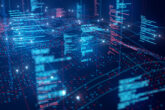August 21, 2024
Regulating Artificial Intelligence Must Not Undermine NIST’s Integrity
The United States is the global leader in the development of AI and is well-positioned to influence AI’s future trajectories. Decisions made today in the US will have a long-lasting impact, both domestically and globally, on how we build, use, and experience AI. However, recent legislative proposals and executive actions on AI risk entangling the National Institute of Standards and Technology (NIST) in politically charged decisions, potentially calling the organization’s neutrality into question.
This is an outcome that must be prevented. NIST plays a key role in supporting American scientific and economic leadership in AI, and a strong, respected, and politically neutral NIST is a critical component for supporting America’s leadership in technological development and innovation.
A strong NIST will continue to help build standards that are adopted globally and lay the foundation for further American AI innovation and dissemination.
For over a century, NIST has helped advance American commerce, innovation, and global technological leadership. NIST’s experts have developed groundbreaking standards, techniques, tools, and evaluations that have pushed the frontier of measurement science. Today, almost every product or service we interact with has been impacted by the “technology, measurement, and standards provided by the NIST.” More recently, in the context of ongoing global AI competition, NIST has also been active in developing important standards for AI-based systems.
Key to this success has always been NIST’s ability to keep politics away from science, remaining neutral, and focusing on what it does best: measurement science. Now, in the name of AI Safety, many emerging proposals would task NIST with conducting and evaluating AI-based systems themselves. These risks are further compounded by the introduction of an increasingly politicized AI Safety Institute (AISI). Though these points might seem trivial, the long-term implications are significant.
Read the full article from the Tech Policy Press.
More from CNAS
-
Indo-Pacific Security / Technology & National Security
America’s Cyber Retreat Is Undermining Indo-Pacific SecurityThis article was originally published in Just Security. On Dec. 3, the White House backed away from sanctioning China’s spy agency, the Ministry of State Security (MSS), that ...
By Morgan Peirce
-
Technology & National Security
CNAS Insights | The Export Control Loophole Fueling China's Chip ProductionThis week, Reuters reported that China has apparently built a prototype of an extreme ultraviolet lithography (EUV) system, a highly intricate machine used to produce cutting-...
By Michelle Nie, Autumn Dorsey & Janet Egan
-
Technology & National Security
Paul Scharre on How AI Could Transform the Nature of WarPaul Scharre, CNAS Executive Vice President, joins host Luisa Rodriguez to explain why we are hurtling toward a “battlefield singularity” — a tipping point where AI increasing...
By Paul Scharre
-
Energy, Economics & Security / Technology & National Security
Recommendations for Promoting American AI AbroadStrategic Context and Program Objectives The American AI Exports Program is an ambitious and essential proposal to expand the reach of American AI technologies in foreign mar...
By Janet Egan, Geoffrey Gertz, Daniel Remler & Ruby Scanlon




